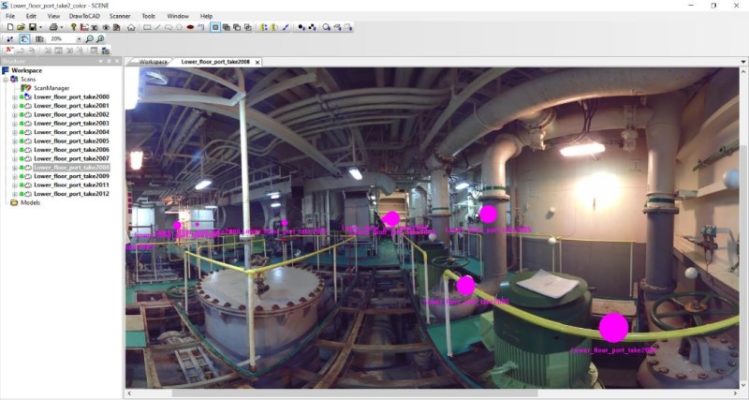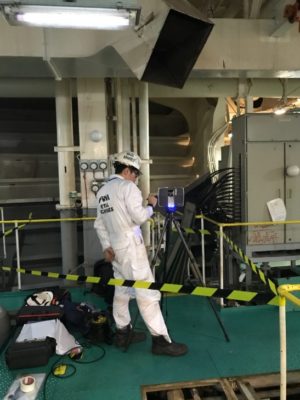Customer's Challenge
Following the International Convention for the Control & Management of Ships’ Ballast Water and Sediments (2004), which took effect on September 8, 2017, ships must treat their ballast water to ensure that aquatic organisms and pathogens are removed or neutralized before release. This is crucial to prevent the spread of invasive species and harmful pathogens.
To retrofit an existing vessel with a ballast water treatment system, accurate as-built data is needed. However, many ships undergo multiple retrofitting processes without updating their blueprints, making it difficult to gather reliable data. Compounding this challenge is the vessel’s limited time in port, leaving little room for data collection.
Solution
Leveraging experience from previous projects, Metal Machines refined a systematic workflow to capture comprehensive data using the Faro Focus 3D terrestrial scanner. A well-defined scanning plan and procedure ensured that critical details were captured quickly and accurately within a short timeframe of 5 to 6 hours. This allowed the field service team to complete the job and disembark before the vessel’s next departure from PSA Singapore.
To avoid costly rescans, each batch of scan data was transferred to a computer after every two scans for verification using Faro Scene software. This step ensured that no essential details were missed, minimizing the risk of delays caused by having to remobilize personnel to the next port.
Once scanning was completed, the process of merging the scan files began back at the office. The reference sphere targets set during each scan helped align the images and create a detailed map of the vessel’s interior layout. A total of 25 scans, amounting to around 6GB of data, were merged within 5 hours. The final output was promptly shared with the client, allowing them to move forward with their project.
Benefits
The detailed 3D scan allowed the client to virtually “walk through” the vessel’s 820m³ of compartments, even without physically boarding the ship. By importing the scan data into their design software, they could effectively plan the installation of the ballast water treatment system and piping, and identify potential clash points before construction began. This streamlined the retrofitting process, saved time, and reduced costs associated with delays or design errors.
With this accurate and comprehensive data, the client could confidently proceed with the design and installation of the ballast water treatment system, ensuring compliance with international regulations while avoiding unnecessary downtime.





